 Approved by Dr. Dwight Alleyne, DVM
Approved by Dr. Dwight Alleyne, DVM Cat In Heat: What To Expect & How To Keep ‘Em Safe
Cat in heat? Uh oh! Follow our tips to be prepared for your cat's mating behavior and know what you can do to best help your feline friend. (Including preventing them from running away to find a mate!)
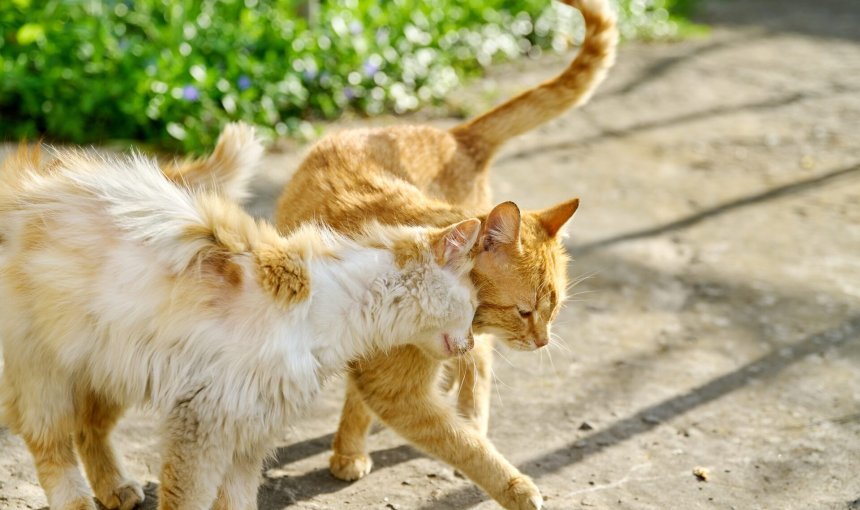

A few years ago, I had the pleasure of raising two adorable baby kittens from infancy. We fed them with a bottle and helped them grow into big healthy, teenage cats. But at some point, my young cats started acting funny. And I soon realized it was because they had reached the age of sexual maturity. Hello, cat in heat!
But what to do when you are presented with this funny behavior, and the new mating rituals of your feline furry friend? (Especially if you want to avoid an unwanted cat pregnancy?)
- How do you recognize the signs of a cat in heat?
- And what’s a cat being in heat got to do with them running away from home?
We’ll cover all that and more, in the article below. Plus, the best way to keep track of your cat at all times – since being in heat is a primary reason why cats run away!
- What does it mean when a cat is in heat?
- Can male cats go into heat?
- What are the signs of a cat in heat?
- Do female cats have periods?
- The cat heat cycle explained
- How long are cats in heat?
- How often do cats go into heat?
- Are cats in pain when they’re in heat?
- How to calm a cat in heat
- Can you spay a cat in heat?
- How to prevent unwanted pregnancy in cats
- Wrapping up: How to handle a cat in heat
- Dr. Dwight Alleyne, DVM
What does it mean when a cat is in heat?
You might have heard the term, ‘cat in heat’ or ‘dog in heat‘ before. ‘In heat’ refers to when a female cat is ready to mate (have sex) and fertile (can become pregnant).
This is also known as the oestrus phase of her sexual cycle and begins already at the age of 5 to 10 months old. (Remember, cats age faster than humans).
The first time I ever realized my young cats were in heat was when they seemed to attempt to mate with each other – although they were brother and sister. 😨 (Here they are, pictured below!)
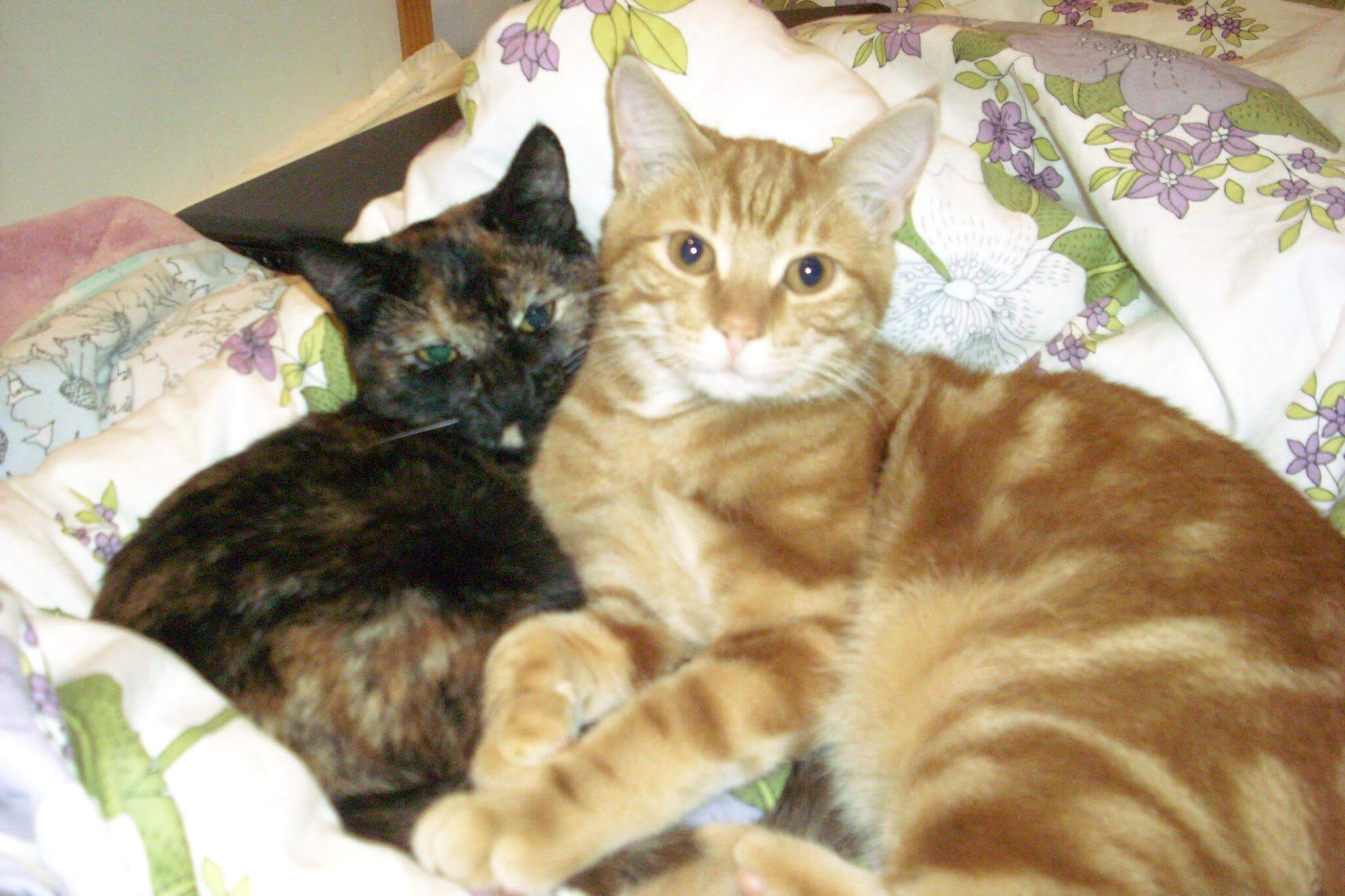
Yes, this can and does occur; especially among cats who are not exposed to many other cats in the wild.
While in heat, their strong, natural mating instinct will cause them to try to mate with any and every cat of the opposite sex nearby – the cat in heat does not obey any rules about how humans think they ‘should’ behave!
Can male cats go into heat?
No, male cats don’t go into heat. Only female cats go into heat.
- Unneutered, however, male cats reach sexual maturity around the same time as female cats – around four to six months of age.
- At this time your male cat may start urine marking their territory…or running away in search of a mate. Sometimes, miles away from safety.

💡This is one of the reasons why cat parents around the world – just like you – are strapping GPS trackers to their buddies’ collars.
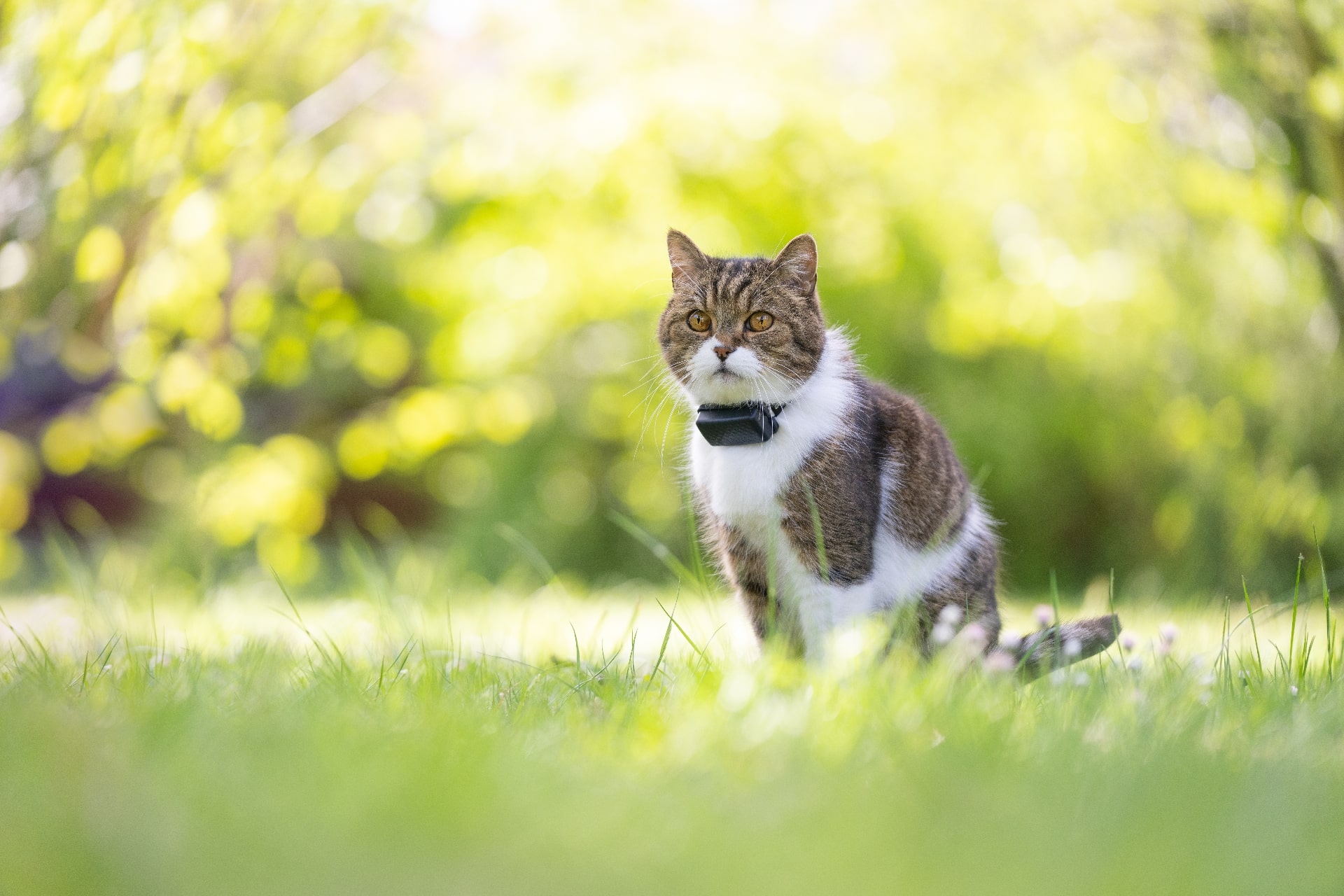
Because with just a glance at your phone, you can now track your cat:
- In real-time,
- Over an unlimited range,
- While on vacation – or over 175 countries if you’re on a Premium subscription
Meaning no need to hover over your cat 24/7.
Just let your trusty Tractive GPS do all the hard work for you. So you can take action right away if you see your cat about to escape home or your backyard.


“Tractive is my #1 recommendation when it comes to cat trackers.
It’s specifically designed for tracking cats so you are sure that it is safe for your cats to use.”
– Clair Chesterman, Owner of CFA and CCA-registered cattery and fostering company, FluffyMeowPaws
What are the signs of a cat in heat?
Now we know your cat might be a grade-A weirdo otherwise. But when they’re in heat, they might:
- Vocalize more, making funny sounds – meowing more often
- Become more restless
- Crawl low to the ground
- Be more affectionate with people, objects, and other animals
- Groom their private parts more frequently
- Try to escape outdoors
- Assume the mating position (behind in the air, tail to the side)
- Urinate to mark territory
- Lose their appetite – but temporarily, usually around week 4 or so
So whether your unspayed cat is meowing, moaning, or crying, walking funny, rubbing up against you and furniture in your home, or taking extra special care of her lady parts, you most likely have a cat in heat on your hands.
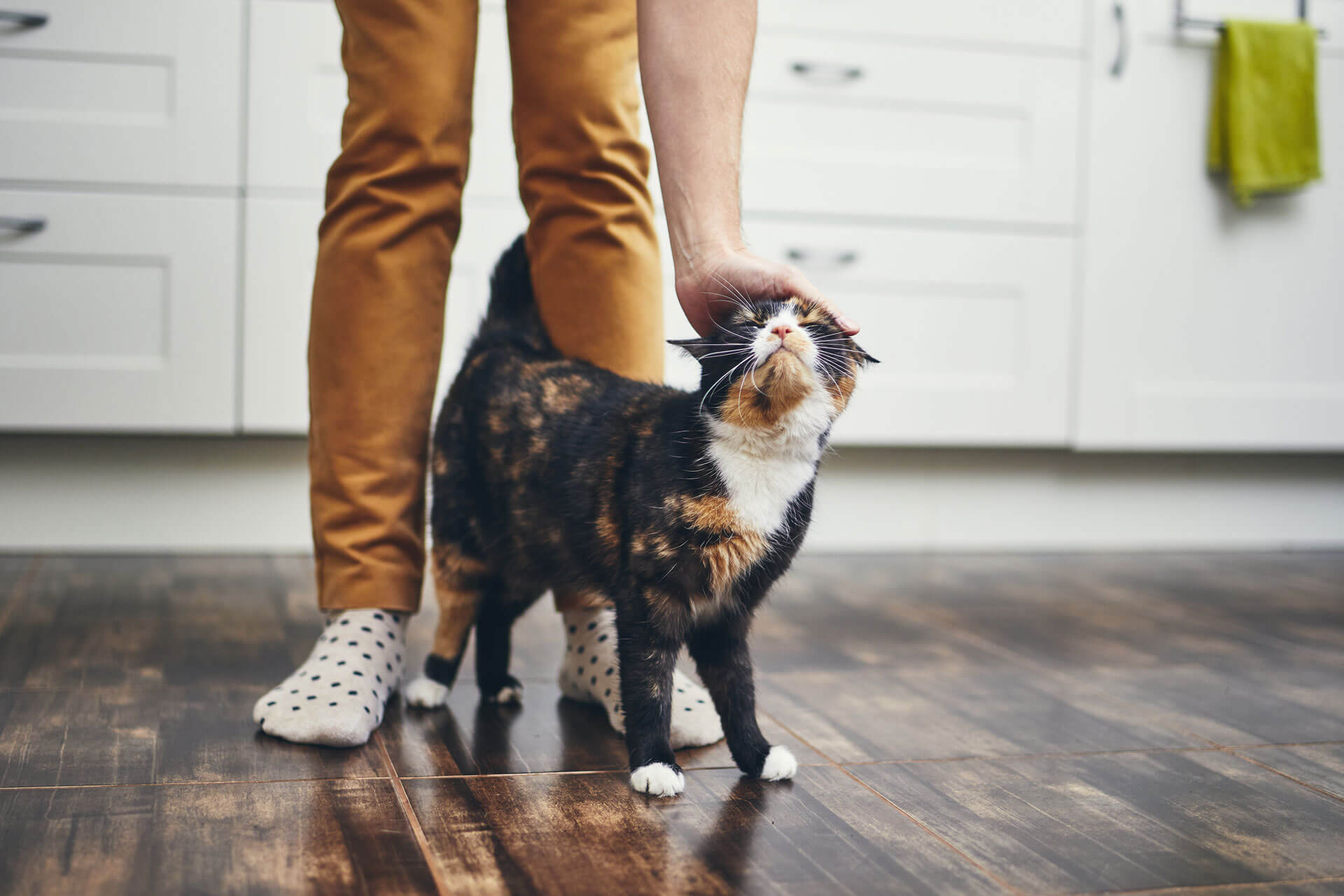
Now, let’s take a look at feline periods and the heat cycle in cats.
Do female cats have periods?
Female cats do have a monthly cycle, but one which is quite different from female humans.
- Rather than shedding the uterine lining like human women do every 32 days or so, cats and some mammals reabsorb the old uterine-lining rather than bleeding it out.
- This takes place during the estrus cycle described below.
Your cat might shed a small amount of blood while in heat. But it’s more common for a female cat with a ‘period’ to display the signs of a cat in heat above.
Make sure to contact your vet if you notice worrisome bleeding in your female or male cat.
The cat heat cycle explained
All female cats will go through the natural heat cycle unless you’ve gotten them spayed – or if they’re already pregnant.
This is also referred to as the estrus cycle and during this time, a cat is capable of breeding – that is, mating and having kittens.

Here are the stages of the cat in heat cycle:
Proestrus
In this stage, the female cat (known as the queen 👑) might attract male cats (that are unneutered).
However, she will not be ready for mating yet. In this stage, which lasts 1-2 days, cats do not show any typical signs of being in heat.
Estrus (heat)
Next, the unspayed female cat enters the heat stage, also known as estrus, oestrus or estrous. For up to a week, she will be receptive to mating and attract the attention of male cats. This is also when she will display the signs of heat.
In case things get hot and heavy, hormone production will be stimulated, which leads to ovulation. Cats may mate several different times during this stage before becoming pregnant. When a female cat does become pregnant, her kittens can have different fathers.
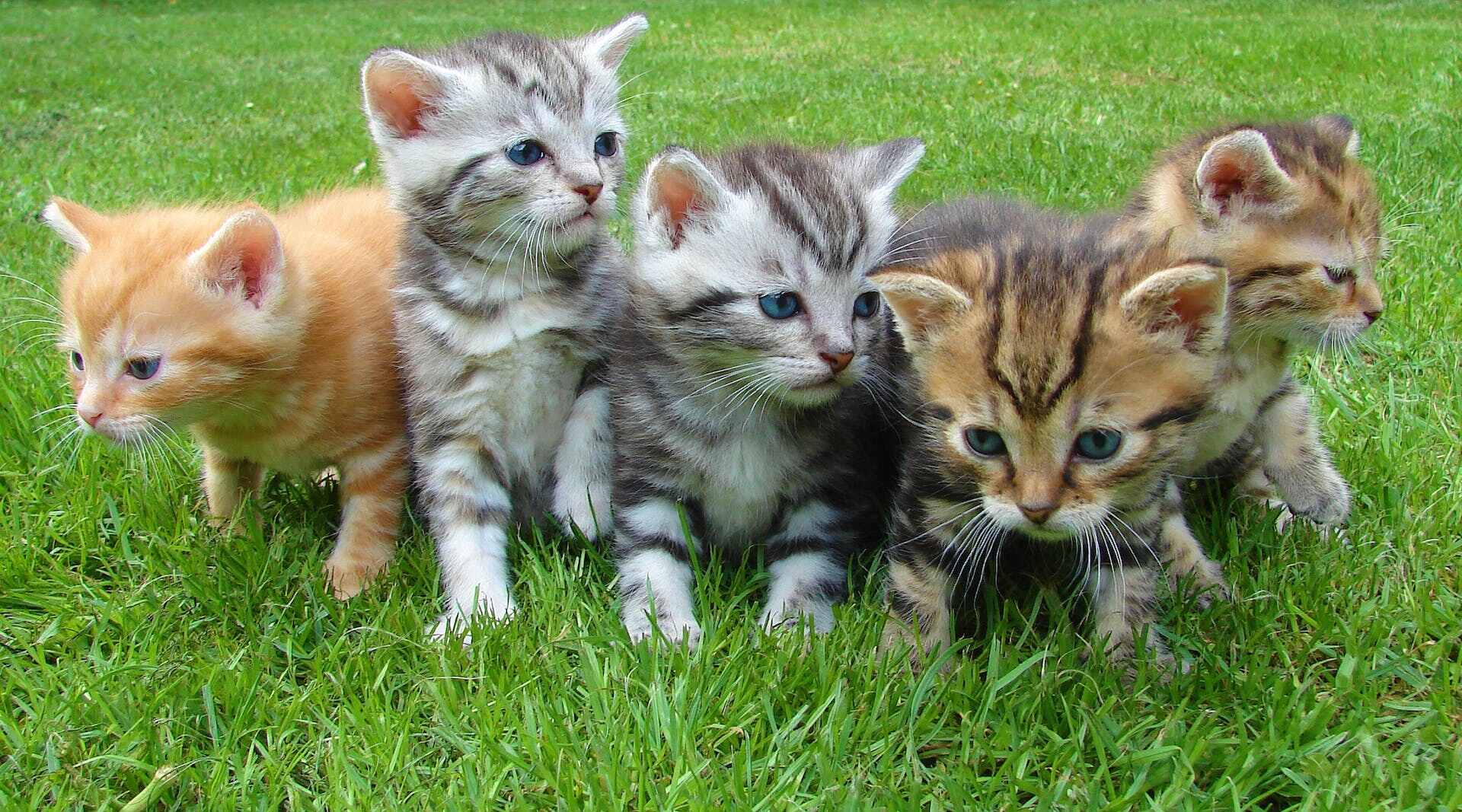
😻 During the estrus phase, female cats in heat will be open for mating – so be sure to follow our recommendations below to ensure you handle your kitty in heat with care and caution.
- Watch out – your female cat may roam when in heat, looking for her next mate!
- Male cats also have a tendency to explore their grounds, looking for females in heat.
Read more: Why Do Cats Run Away? 10 Reasons + How To Stop ‘Em
💡This is where you can monitor your cat’s whereabouts with the help of cat GPS and activity tracker.

Your Tractive device even helps you map out your cat’s territory – or figure out their favorite hangout (or hiding) spots. I.e., where they’re likely to go to:
- Find a mate,
- Deliver their litter safely,
Which might be the farm or barn next door…or miles away from safety.
Here’s your cat’s territory marked out in yellow on your Tractive mobile app:
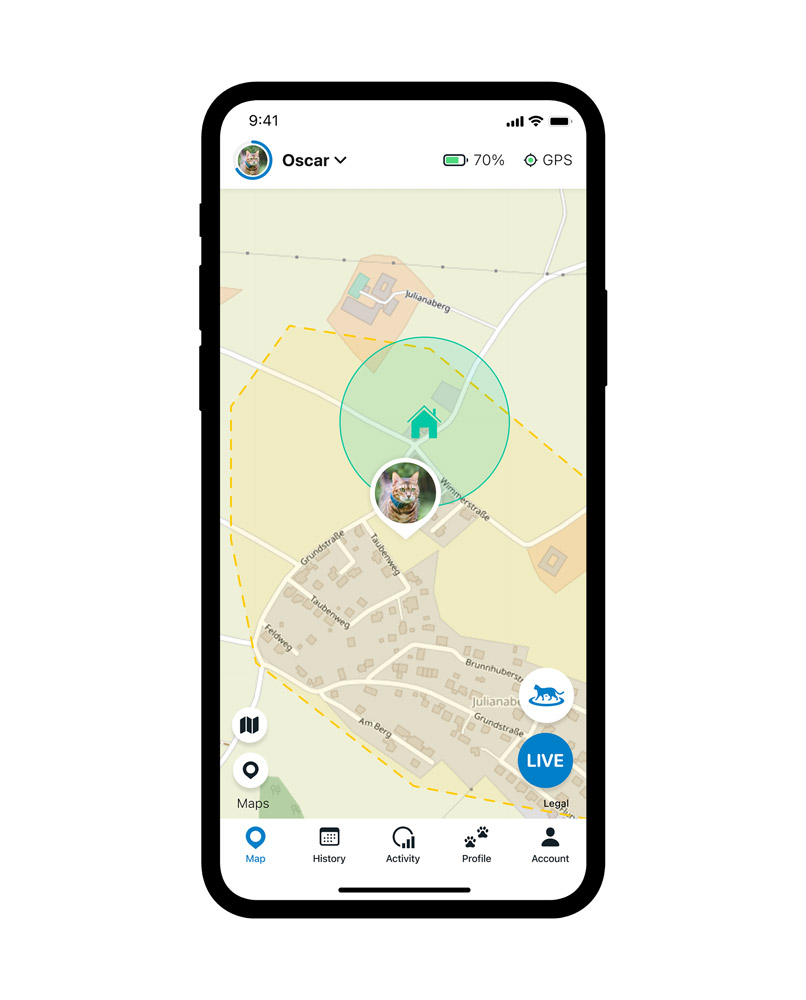

Read more: This Family of Sick Kittens Was Rescued With The Tractive GPS
Interestrus
In case the cat has not mated or become pregnant during estrus, she will enter the phase of interestrus, or the period between heats. She will display no specific signs of being in heat. In a few days or up to 3 weeks, the cat will go into heat again. The cycle of proestrus, estrus, and interestrus repeats throughout the mating season.
Read more: Is My Cat Pregnant? What To Watch Out For
Anestrus
The last stage is called anestrus – this is a dormant period for the cat’s reproductive system. She will not experience any estrus activity, as mating season is often seasonal. The heat cycle tends to last from spring to fall, when the light of long days stimulate your feline’s hormones.
During the shorter-day seasons of late fall and winter, your cat may not go into heat at all. However, artificial lighting may cause your cat to go into heat all year.
If you notice unusual behavior in your cat, and aren’t sure if she’s in heat or not, contact your vet for support.
Read more: Why Do Cats Make Biscuits? (Aka, The Feline Need To Knead)
How long are cats in heat?
The cat in heat or estrus phase – when the cat is ‘calling’ for a prospective mate – can last anywhere from 1 – 7 days.
- If your cat does not mate, she will likely go into heat again a few weeks later.
- The whole cycle lasts about 3 weeks, according to Pippa Elliott, MRCVS Veternarian2
- It may continue year round or only from February – October.
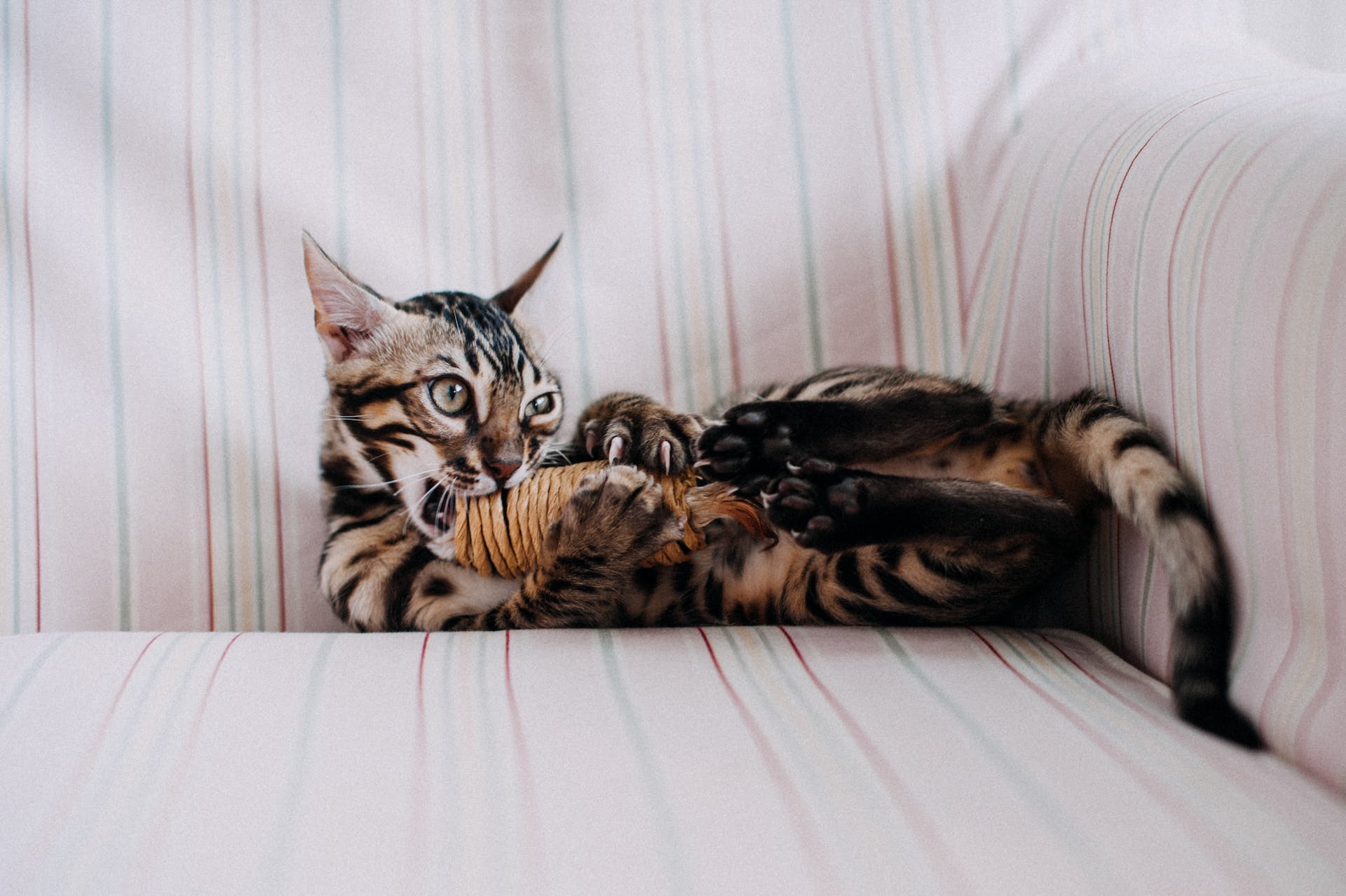
How often do cats go into heat?
As long as a female cat is not spayed, she may go into heat as often as every two to three weeks.
Cats can have multiple heat cycles during their breeding season, which is generally during the warmer months. However since most cats in North America and Europe live indoors in comfortable environments, they can come into heat year round3.
Are cats in pain when they’re in heat?
The cat heat cycle is a normal and healthy part of the life of every cat. Being in heat is not typically painful for cats, although they may feel some discomfort or agitation.
When your cat in heat makes a loud, howling sound, you may assume they’re in pain. But rest assured, the increased vocalization (known as “caterwauling”) is just your cat’s way of attracting a potential suitor.
Read more: Why Is My Cat Crying? The Real Reasons Behind Feline Tears.

How to calm a cat in heat
If your cat seems excited or agitated, you may want to help calm her while she is in heat. Here are several ideas for how to calm a cat in heat:
- Keep your female cat away from male cats
- Let her sit on a heat pack, warm towel, or electric pad or blanket
- Use Feliway or other synthetic cat pheromones
- Keep the litter box clean
- Play with your cat
Can you spay a cat in heat?
Once you notice that your female cat is in heat, you may want to get them spayed to prevent future pregnancies. But can you spay a cat in heat? Veterinarians recommend waiting at least one month after your cat’s heat cycle before getting them spayed. That’s because cats that get spayed during heat may experience more bleeding and be more at risk during the surgery than cats that are not in heat.
Additionally it may cost more to have your cat spayed while she’s in heat3. Talk to your vet about when is the best time to spay your feline.
How to prevent unwanted pregnancy in cats
The safest way to avoid unwanted pregnancy in female cats is to have them spayed as soon as they reach sexual maturity.
It’s important to get your male cats neutered too, to avoid them causing unwanted pregnancies in your neighborhood queens, a.k.a female cats. Here’s my cat Betta, safely neutered and no longer wandering off to find the purr-fect mate!
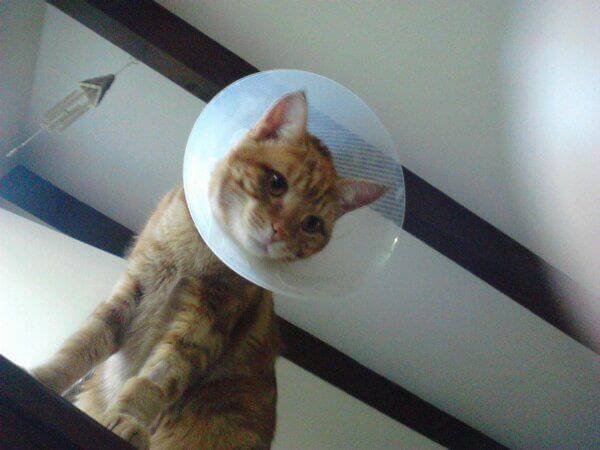
After getting neutered, he thankfully no longer tries to mate with his sister – or any other cats around.
And thanks to the Tractive GPS cat tracker, I can always keep an eye on his whereabouts right in the smartphone app and retrieve him if needed.
Wrapping up: How to handle a cat in heat
Remember: cat mating behavior can start at an early age – around 5 months old – and it’s safe for cats to be spayed around this time. As a responsible cat parent, there’s a lot you can do to ensure you aren’t suddenly about to graduate to cat grandparent!
So once your cat’s reached sexual maturity, they might:
- Vocalize more, making funny sounds – meowing more often
- Become more restless
- Crawl low to the ground
- Be more affectionate with people, objects, and other animals
- Groom their private parts more frequently
- Try to escape outdoors
- Assume the mating position (behind in the air, tail to the side)
- Urinate to mark territory
- Lose their appetite – but temporarily, usually around week 4 or so
All of which can signal them being in heat – meaning you should take precautions much in advance.
The top ways to prevent an unwanted pregnancy in your cat include:
- Getting them spayed or neutered
- Keeping them indoors – and ideally, occupied with toys and treats
- Building your cat an enclosure that’s secured from the elements (and other animals)
- Keeping your female cat away from male cats
Otherwise…well – don’t say we didn’t warn you! As cute as they are, dealing with a litter of kittens you aren’t prepared for can triple or even quadruple your responsibilities as a cat grandparent.
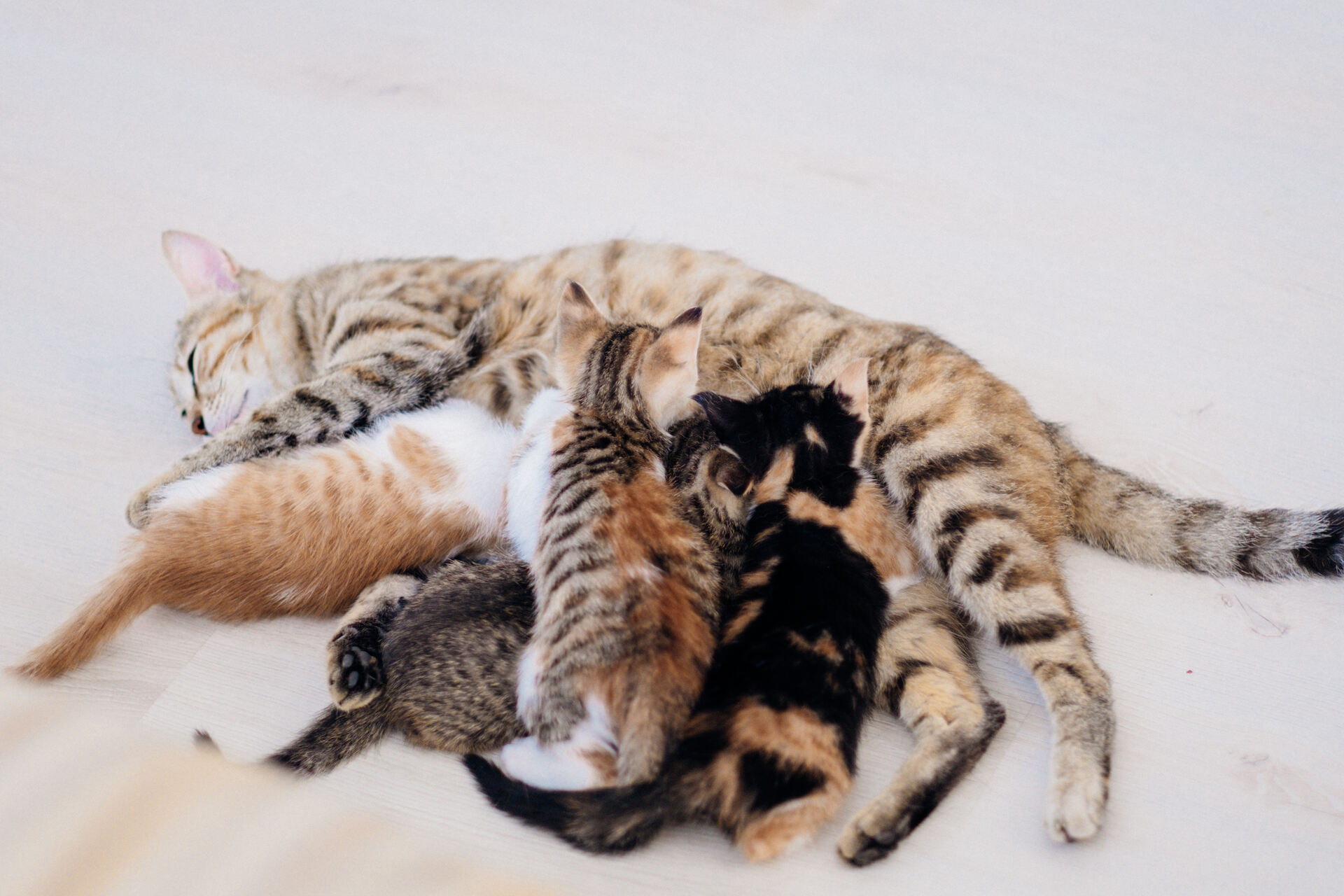
But most importantly…
- Invest in a GPS and activity tracker for your cat – to prevent an escape attempt.
Being in heat and struggling with their reproductive instincts is one of the prime reasons cats run away from home.
Else you might just end up with an angry neighbor knocking at your door demanding kitty child support!
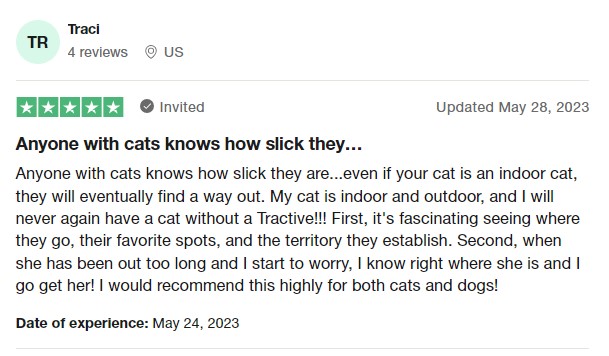

Know everywhere your cat goes
See where they are in real-time, no matter how far they go. Get alerts if they roam too far home. Make sure they’re getting enough exercise and rest throughout the day. Set daily goals that fit your furball.
For more insight on how cats in heat behave, check out the video below:

This post was written by Chelsea Workman, animal (especially cat) lover and Digital Marketing Manager at Tractive.
She enjoys writing about cats and dogs and helping customers always keep track of their pets.
Your furry friend’s health and wellbeing means as much as to us as it does to you. So we’ve made it a priority to only share medically-relevant content on our blog.
This post was checked, double-checked, and medically verified by Georgia-based vet, Dr. Dwight Alleyne.
Dr. Dwight Alleyne, DVM
Dwight Alleyne was born and raised in Long Island, New York where his love of animals began. His career for animals began working for a well-known no-kill animal shelter on Long Island.
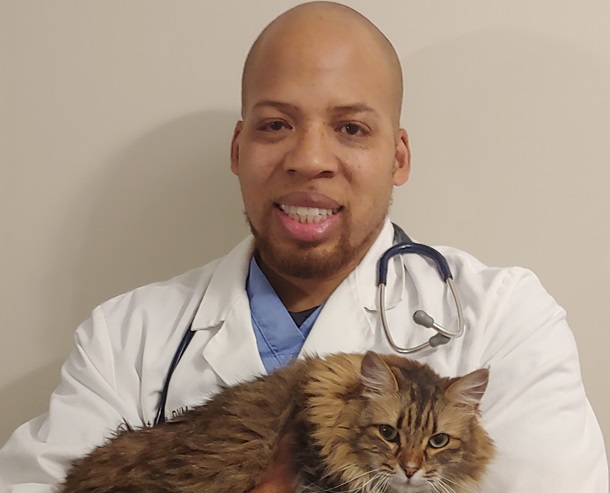
He worked his way up the career ladder working as a kennel technician, veterinary assistant, and then becoming a licensed veterinary technician at the shelter.
His passion for veterinary medicine led to him applying to and being accepted at Cornell University Veterinary where he graduated from in 2006. After completing a small animal rotating internship at Purdue University, he eventually made his way to Georgia where he has been practicing ever since.
Dr. Alleyne has practiced at several small animal clinics throughout Georgia. He has a keen interest in soft tissue surgery and has extensive experience in performing ultrasounds including echocardiograms.
When he is not practicing medicine, Dr. Alleyne enjoys writing and editing pet health articles and providing pet advice through telehealth.
Dr. Alleyne also has his own blog called “The Animal Doctor Blog.” Check it out on: www.anmldrblog.com.


